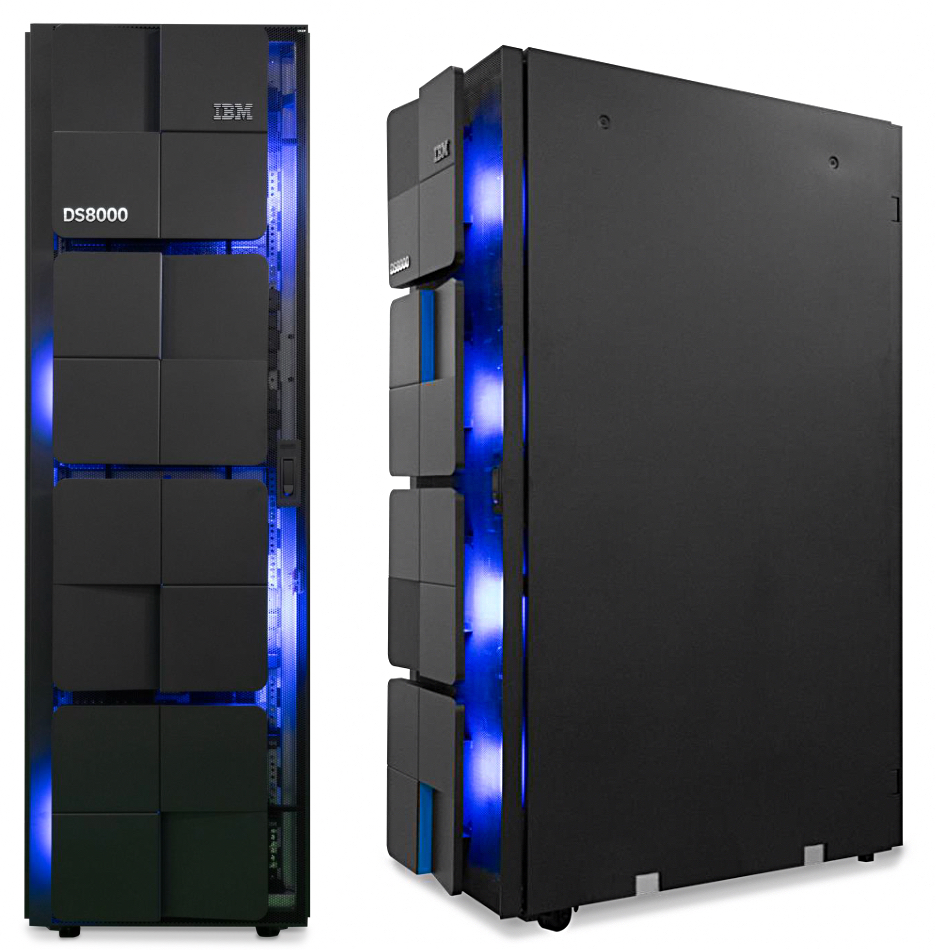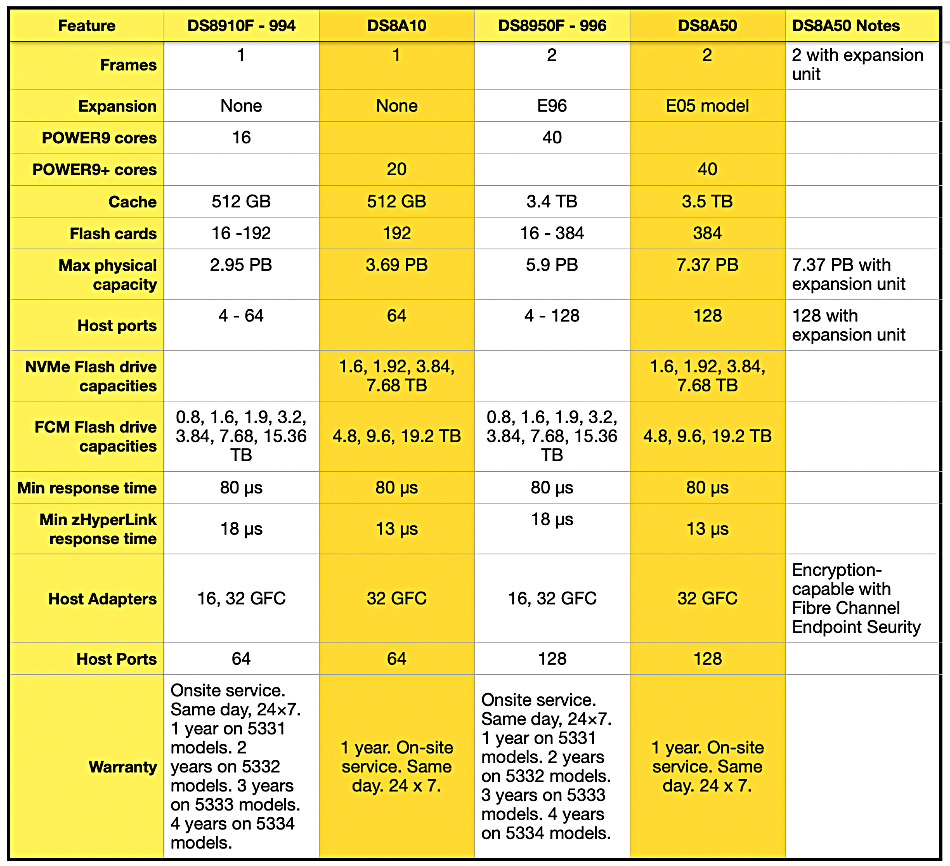IBM has designed its block access DS8000 mainframe arrays to store more and access data faster with its tenth-generation models.
The two all-flash models have got enhanced Power9 processors, not the latest Power10, and use the latest gen 4 FlashCore Module (FCM4) solid state drives with onboard compression and dedupe. There is the single frame DS8A10 entry product and the larger DS8A50 multi-frame model, which succeed the 2020-era DS8910F, DS8950F, and DS8980F products.
IBM told us the new DS8000 range “is ready for the next generation of data intensive workloads. It can seamlessly manage AI workloads while integrating with analytics tools to deliver insights and predictive capabilities.”

An IBM datasheet reveals that the new products have up to 2x storage capacity in the same space when using the FCM4 drives and up to 73 percent more IOPS for high volume transaction processing with new HPFE Gen 3 flash enclosures containing the FCM4 drives.
Big Blue claims they also have up to eight nines availability – 99.999999 percent. It claimed seven nines with the prior range. Recoverability has also improved. The Recovery Point Objective (RPO) is now two seconds, down from two to four, and the Recovery Time Objective (RTO) is less than 60 seconds. There is 100 percent data encryption with Fibre Channel Endpoint Security (IFCES). A table compares the old and new models:

The new model feature list includes:
- Transparent Cloud Tiering (TCT) to IBM Cloud Object, Amazon S3, RSTOR and TS7700 VTL configured as object storage target
- Safeguarded Copy
- HyperSwap for high availability
- Reads from a secondary site both over FICON and zHyperLink to obtain the same response time as the primary system and better workload balance.
- Copy Services Manager (CSM) across two site, three site or four site environments. Providing a single point of control across the entire storage environment, customers can manage and monitor their Disaster Recovery, High Availability and Cyber Resiliency features.
- Kubernetes CSI support
- Storage Insights cloud-based management for health, capacity and performance trends
There’s more information in an IBM blog.








